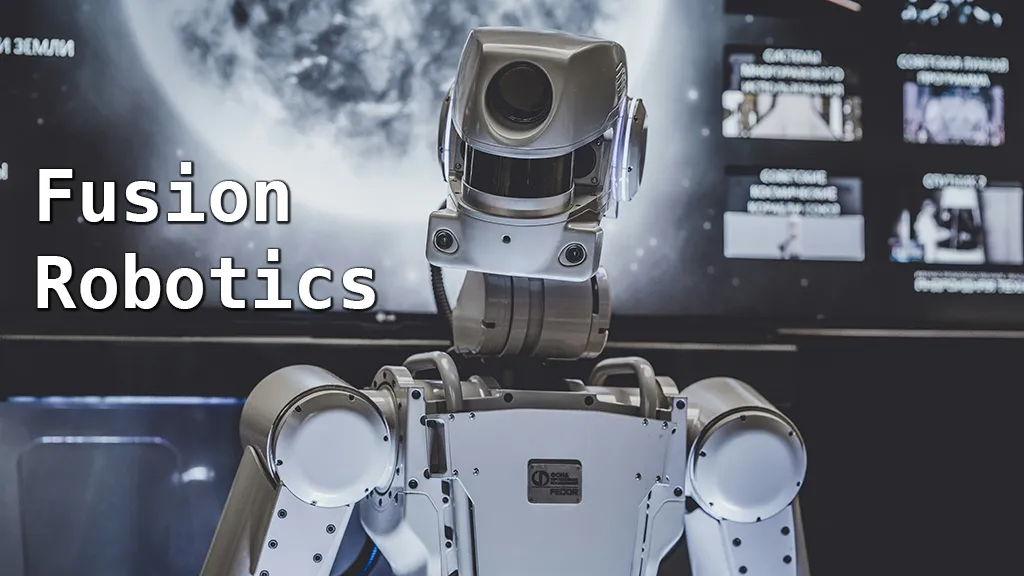Robotics in Pop Culture: From Sci-Fi Movies to Real-Life Innovations

Robots have been a staple of pop culture for decades, capturing our imaginations through films, TV shows, and literature. These fictional portrayals have often inspired real-world innovations, driving the development of robotics technology. This article explores the intersection of robotics and pop culture, examining how iconic sci-fi robots have influenced modern robotics and the ongoing relationship between imagination and innovation.
The Evolution of Robots in Pop Culture
Early Depictions of Robots
The concept of robots has fascinated humans for centuries, but it wasn't until the early 20th century that they began to appear prominently in pop culture.
Metropolis (1927)
One of the earliest and most influential portrayals of a robot in cinema is Maria from Fritz Lang's "Metropolis." This silent film's depiction of a humanoid robot set the stage for future cinematic robots, combining elements of fear and fascination with the idea of artificial beings.
The Golden Age of Sci-Fi
The 1950s and 1960s saw a boom in science fiction films and literature, featuring robots as central characters. Classics like "Forbidden Planet" (1956), with its iconic robot Robby, and Isaac Asimov's "I, Robot" series, introduced the concept of robots with complex personalities and ethical dilemmas.
The Rise of Iconic Robots
The latter half of the 20th century introduced several iconic robots that have left a lasting impact on both pop culture and robotics.
R2-D2 and C-3PO (Star Wars)
George Lucas's "Star Wars" franchise brought us two of the most beloved robots in pop culture: R2-D2 and C-3PO. These characters showcased robots as helpful, intelligent, and even humorous companions, influencing the way people perceive robotic assistants.
The Terminator (1984)
James Cameron's "The Terminator" introduced a darker, more menacing vision of robots. The Terminator, portrayed by Arnold Schwarzenegger, is a relentless, nearly indestructible cyborg, embodying fears of autonomous, weaponized robots.
WALL-E (2008)
Pixar's "WALL-E" presented a more optimistic and touching portrayal of robots. WALL-E, a small waste-collecting robot, displayed emotions and humanity, highlighting the potential for robots to evoke empathy and foster connections with humans.
Real-Life Innovations Inspired by Sci-Fi
From Fiction to Reality
Many of the robots depicted in pop culture have directly inspired real-world technological advancements.
Humanoid Robots
The humanoid robots of sci-fi have spurred the development of real-life counterparts like Honda's ASIMO and Boston Dynamics' Atlas. These robots aim to replicate human movements and capabilities, pushing the boundaries of robotics research.
Robotic Assistants
The helpful and personable robots from pop culture, like R2-D2 and C-3PO, have influenced the development of robotic assistants and home robots. Devices like iRobot's Roomba and Amazon's Alexa integrate robotics and AI to assist with everyday tasks, making technology more accessible and user-friendly.
Ethical and Philosophical Questions
Pop culture has also raised important ethical and philosophical questions about robotics, influencing discussions in the real world.
Asimov's Three Laws of Robotics
Isaac Asimov's Three Laws of Robotics, introduced in his "I, Robot" series, have become a foundational concept in discussions about robot ethics. These laws emphasize the importance of safety, obedience, and protection, guiding the development of ethical frameworks for AI and robotics.
The Singularity
The concept of the technological singularity, popularized by sci-fi works like "The Terminator" and "The Matrix," has sparked debates about the future of AI and robotics. The idea that machines could surpass human intelligence and potentially pose existential threats drives ongoing research into AI safety and governance.
The Ongoing Relationship Between Pop Culture and Robotics
Mutual Influence
The relationship between pop culture and robotics is symbiotic, with each influencing the other in a continuous feedback loop.
Inspiration and Aspiration
Pop culture provides a source of inspiration for engineers and researchers, motivating them to turn fiction into reality. At the same time, advancements in robotics inspire new sci-fi stories, reflecting and exploring the possibilities and challenges of emerging technologies.
Public Perception
Robots in pop culture shape public perception and expectations of real-world robots. Positive portrayals can generate excitement and acceptance, while dystopian visions can lead to fear and skepticism. This dynamic influences how society embraces and regulates new technologies.
Educational Impact
Sci-fi robots often serve as educational tools, sparking interest in STEM fields among young audiences.
Robotic Competitions and Workshops
Many educational programs use popular robots from movies and TV shows to engage students in robotics and engineering. Competitions like FIRST Robotics often feature themes inspired by sci-fi, encouraging creativity and innovation.
The Future of Robots in Pop Culture
Emerging Trends
As robotics technology continues to advance, new trends in pop culture are likely to emerge, reflecting and shaping the future of this field.
AI and Machine Learning
With the rise of AI and machine learning, future pop culture depictions of robots will likely focus on their cognitive abilities and decision-making processes. Shows like "Westworld" and movies like "Ex Machina" explore these themes, raising questions about consciousness, identity, and morality.
Human-Robot Interaction
The evolving relationship between humans and robots will be a central theme in future stories. How we coexist, collaborate, and communicate with robots will be explored in new and innovative ways, highlighting both the potential benefits and challenges.
Societal Impact
The ongoing portrayal of robots in pop culture will continue to influence societal attitudes and policies toward robotics.
Regulation and Governance
As robots become more integrated into everyday life, pop culture will play a role in shaping public opinion on regulatory and governance issues. Stories that address privacy, security, and ethical considerations will inform debates and policymaking.
Conclusion
Robots have captivated our imaginations through pop culture, inspiring real-world innovations and shaping our understanding of technology's potential and pitfalls. From early depictions in silent films to today's complex AI-driven characters, the interplay between fiction and reality continues to drive the evolution of robotics. As we look to the future, the stories we tell about robots will undoubtedly influence the technologies we develop and the ways we integrate them into our lives, ensuring that the legacy of sci-fi robots lives on.
